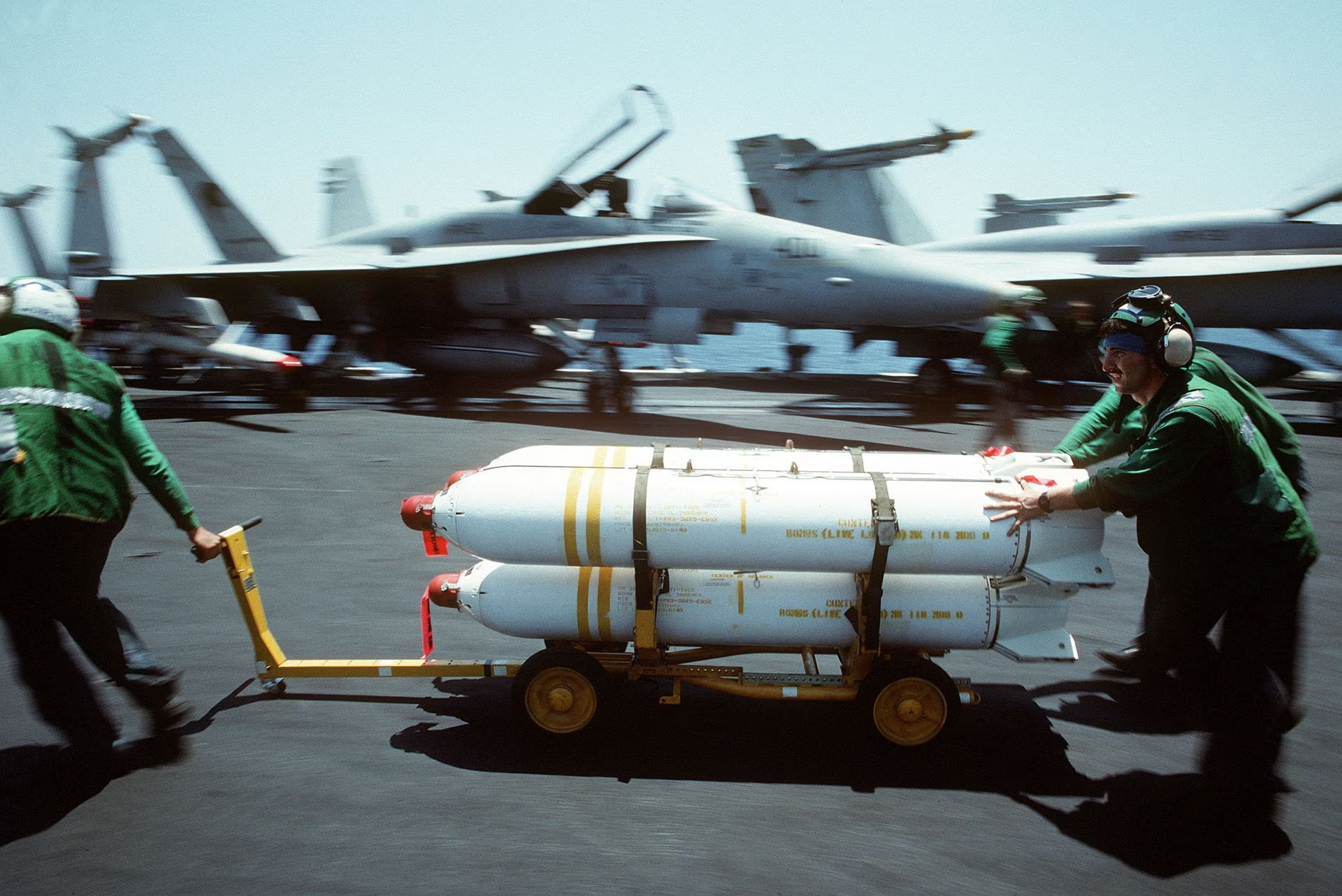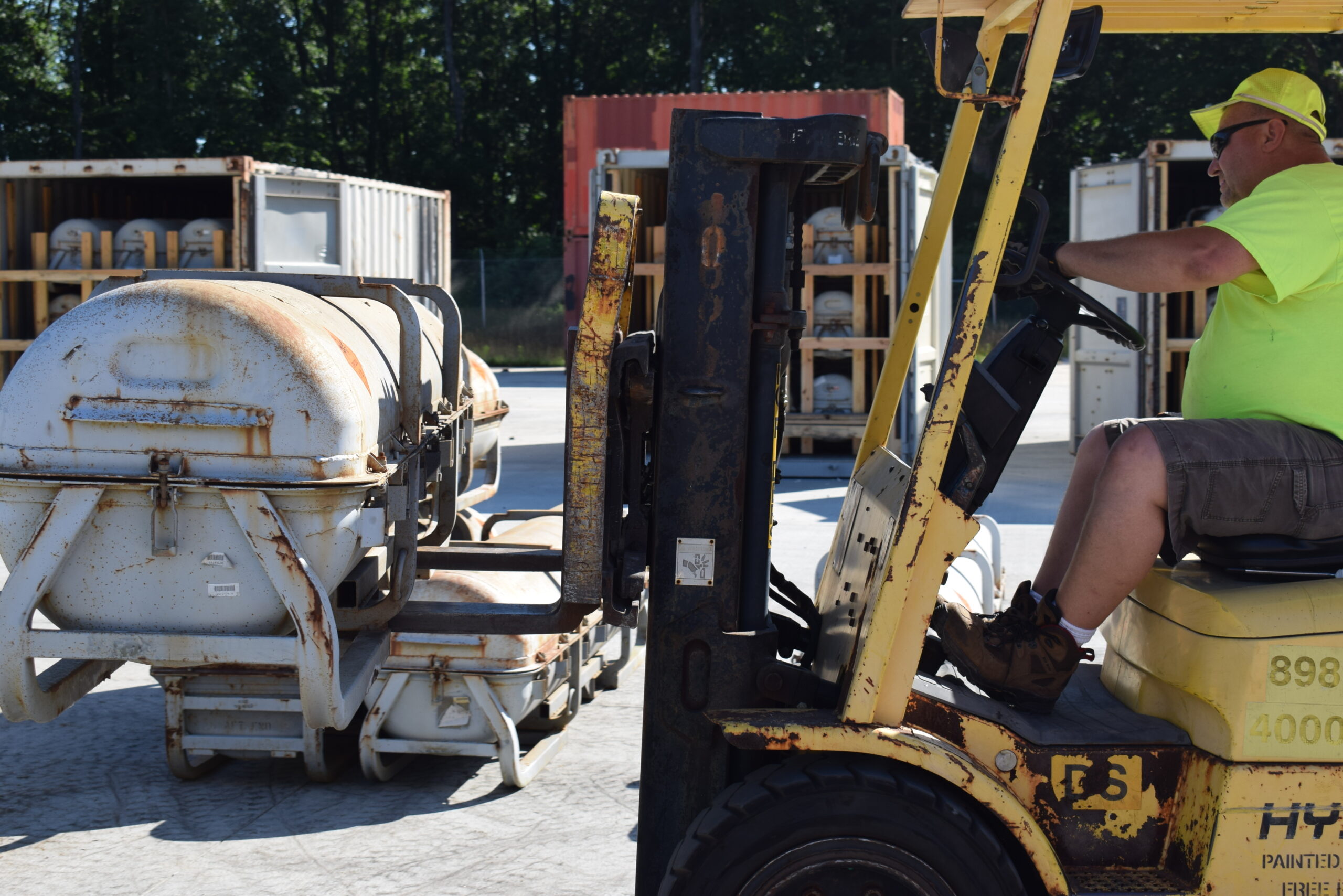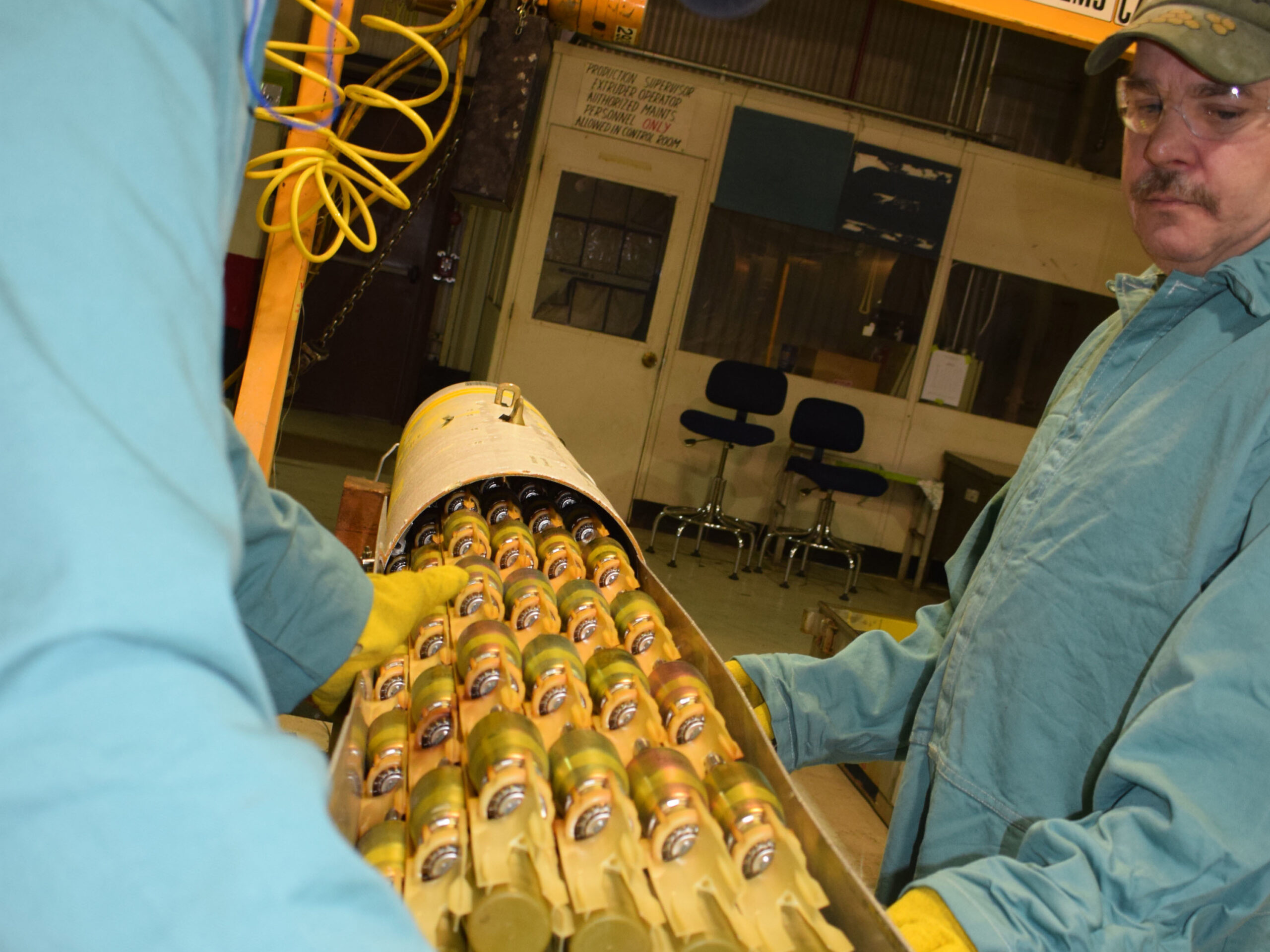Ukraine is once again requesting access to U.S. stockpiles of controversial cluster bombs. However, this time around, Ukraine wants to essentially deconstruct the munitions and arm its drones with the cannibalized anti-armor bomblets. The re-emergence of Ukraine’s petition for these weapons comes as its forces struggle to fend off a Russian counteroffensive in Eastern Ukraine.
Reuters was the first to report on Ukraine’s revived request for cluster bombs, citing information provided to the outlet by U.S. Representatives Jason Crow and Adam Smith, both of whom serve on the House Armed Services Committee. The article, which is worth its own read, explains that Ukrainian officials were urging U.S. lawmakers to approve sending the weapons while attending the Munich Security Conference held in Germany last month.

According to Reuters, Ukraine is specifically asking for Mk 20 Rockeye II cluster bombs. Also known as CBU-100, Ukraine’s reported plan for the weapons would not involve dropping them from combat aircraft. Instead, they would take the Mk 20s apart and their submunitions would be adapted into bomblets that will be dropped by lower-end drones.
Mk 20 is an air-dropped conventional free-fall weapon that weighs just under 500 pounds. The canister holding the bomblets opens mid-flight, dropping its 247 Mk 118 high-explosive, anti-tank (HEAT) submunitions onto the target area below. The height at which the canister is set to open dictates the spread pattern of the bomblets on the ground below.

The Mk 118 bomblets are fin-stabilized, point impact base detonating (PIBD) submunitions. The Collective Awareness to Unexploded Ordnance (CAT-UXO) website explains that the Mk 118’s fuze “arms electrically and mechanically after the release from the dispenser by rotation of the rotor blades attached to the base fuze element.”
“The fuze contains a discriminating firing mechanism that functions upon impact with a hard target by initiating a small detonator in the nose element,” CAT-UXO added.

Rep. Smith is quoted in the Reuters article as saying that the Ukrainian military believes the Mk 20’s bomblets will be more effective in piercing Russian armor than the various munitions it has previously adapted to arm its small drones.
The move wouldn’t be a blatant deviation from the tactics Ukraine has employed, as weaponized drones of many types have been widely leveraged by the country’s military in its defense against Russia’s invasion. Beyond its kinetic effects, the fact that the Mk 118 submunition is fin-stabilized and has a reliable fuze would likely make it very attractive for Ukraine’s drone operations.
Human Rights Watch (HRW) claimed that in 2005 the total number of Mk 118s in U.S. inventory was 14.5 million. This figure would equal about 58,704 complete Mk 20 cluster bombs in U.S. stockpiles, though that number could very well have fluctuated since 2005.

The lawmakers told Reuters that Ukraine is also re-upping its ask for 155mm Dual-Purpose Conventional Improved Munition (DPICM) artillery cluster shells, each of which disperses 88 submunitions when fired. These weapons have been in use with the U.S. military since the 1970s and can be equipped with shaped or fragmentation charges, which are ideal for anti-armor and anti-personnel operations respectively.
Ukraine has touted DPICM’s potential use against personnel specifically. Lawmakers told Reuters that Ukraine could see the benefit of employing DPICMs to halt the “human wave attacks” that Russia has been waging in its staunch counteroffensive in eastern Ukrainian cities like Bakhmut.

There is no indication at this time, however, that the White House is poised to sign off on the sending of cluster bombs to Ukraine. Such weapons are banned in over 100 countries under the 2008 Convention on Cluster Munitions, not including the U.S., because of the harm they pose to civilians, especially long after they have been launched.
Legislation from 2009 that was signed into law by the Obama administration also prohibits the export of cluster munitions that have a submunition failure rate of 1 percent or higher, but this can be waived by the sitting President. The ban exists because if bomblets in a cluster weapon fail to detonate, dozens of live submunitions would be left scattered around the target area, posing a risk to civilian lives until they could be properly disposed of. This is especially true for curious children. An HRW article from that year states that “only a very tiny fraction of the cluster munitions in the US arsenal meet the one percent standard.”

Despite these concerns, U.S. military officials have admitted in the past that cluster munitions are “legitimate weapons with clear military utility.” It is the cluster bomb’s propensity for accruing collateral damage that had the Biden administration carefully weighing Ukraine’s initial request for the weapon back in early December of last year.
Even still, because of the U.S.’s overarching promise to provide Ukraine with as much military support as possible, the White House has yet to explicitly reject Kyiv’s request for cluster munitions. This is likely because, with Ukraine’s ammunition and artillery shell quantities dwindling at an increasing pace, the U.S. wants to make it clear that it’s willing to send Ukraine whatever it may need to sustain the fight as long as it makes sense and the law permits.

Assuring the White House that these weapons would not be used in a traditional ‘area’ deployment could be how Ukraine convinces lawmakers to send them. Rep. Crow told Reuters he himself could potentially be in support of the delivery if Ukraine is able to make this case. Republican Senator Lindsey Graham has also said that he’ll be pressing the White House to provide Ukraine with the cluster munitions. Rep. Smith, however, is confident the delivery won’t happen.
It’s also worth noting that, despite the restrictions put upon the use of cluster bombs, many reports that have emerged throughout the now year-long conflict in Ukraine have detailed numerous instances where Russia has employed cluster munitions. Commonly mentioned has been the country’s 300mm Smerch cluster bomb that releases 72 submunitions over an expansive area. These strikes are presumed to have killed hundreds of civilians.

The New York Times has also published an article detailing the use of cluster munitions by Ukrainian forces last spring, as well. The outlet said that the Ukrainian military employed these weapons in a neighborhood in the eastern town of Husarivka to push back advancing Russian troops.
How exactly Ukrainian forces plan to rig a drone to carry and drop a cluster bomb submunition is unclear, as is the specific drone platform or platforms that it would use to do so. But the Ukrainian military has adapted drones to drop many types of munitions that are far less purpose-built than Mk 118s throughout the last year of fighting against Russian invaders. Doing so with Mk 118s should be fairly rudimentary.
So, disassembling a cluster munition and using its bomblets to arm drones for anti-armor operations is very much in Ukraine’s wheelhouse. It is also another reminder of just how deeply the weapons stocks of allied nations are being examined for use — even if in a non-traditional manner — in Ukraine’s fight against Russia.
Editor’s note: A previous version of this story included Reuters’ incorrect attribution of the production of Mk 20 Rockeye II cluster munitions to Textron Systems. The company has since reached out saying it is not the manufacturer of these weapons.
Reuters has also since retracted the information given to them by an unnamed congressional aide detailing that over one million Mk 20 units still currently exist in U.S. military stockpiles. The War Zone questioned that statement in our article and we have since replaced it with more definitive information.
Contact the author: emma@thewarzone.com
